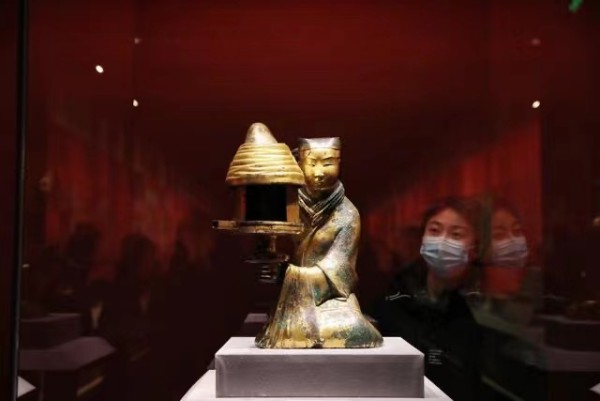
China's 20 years of comprehensive research tracing the origins of Chinese civilization showcased the 5,000-plus years of brilliance through fruitful achievements and it embraced an interdisciplinary method and a global view, Wang Wei, a researcher with the Chinese Academy of Social Sciences said.
On May 27, the 39th group study session of the Political Bureau of the CPC Central Committee was held to further the national research project
China's national-level project to trace the origins of Chinese civilization was launched in 2002, and about 400 scholars across the country in 20 disciplines of natural and social sciences have participated in the project.
Wang, who delivered a lecture on the group study session, said four archaeological sites from between 3500 to 1500 BC have been the focus in relevant studies, and other major city ruins from this period along Yangtze, Yellow, and Liaohe rivers were also highlighted in the project.
Liangzhu site in Hangzhou, Zhejiang province, dating back 5,300 years, for example, was a capital-level city ruins of a regional state, where a brilliant rice-growing and jade-worshipping civilization become prosperous.
Both large-scale Taosi site in Linfen, Shanxi province, and Shimao site in Shenmu, Shaanxi province, also provided many crucial clues to decode urban development as well as forming of complicated societies and even early-stage states along the Yellow River.
Recent archaeological researches surrounding Erlitou site in Luoyang, Henan province, has showcased it was probably the capital of the Xia Dynasty (c.21st to 16th century BC), the first central dynasty recorded in Chinese history.
"The research has greatly contributed to our understanding of characteristics of Chinese civilization," Wang told China Daily. "Its development has been continuous, and various roots of our civilization were linked with and frequently exchanged with other. They gradually formed a shared community."
He also pointed out the inclusiveness of Chinese civilization can be demonstrated in the research. For example, cultivation of wheat, breeding of cattle, and metallurgy, which were all originated in West Asia, were introduced into Central China Plains more than 4,500 years ago. China then developed its own brilliant ceremonial civilization with bronze wares.
And China also contributed some key cultural elements, such as cultivation of millet, to the rest of the world.
"Our current comparative studies involving early-stage Chinese civilization and its counterpart worldwide through field research are still insufficient, but fast development of Sino-foreign archaeological programs can largely enrich our knowledge in the field.
"We welcome overseas scholars to join our upcoming research in the project and thus usher our studies of ancient Chinese civilization to be a crucial part of general studies of world civilization," he said.
A global horizon has been never absent since the project was launched.
The May 27 group study session stressed that the project has put forward its own definition of civilization, which has made creative contributions to the research on tracing the origins of the world civilization.
Among Western scholars, appearance of metallurgy, written characters, and cities, were long considered to be three indispensable elements to define a civilization. Following their criteria, the earliest Chinese civilization only appeared around 3,300 years ago starting from Yinxu Ruins in Henan province, where the oracle bone inscriptions were discovered.
According to Wang, those criteria largely based on recent centuries' research on Mesopotamian and ancient Egyptian civilizations are not ubiquitous. For instance, in American continent, metallurgy was absent in Maya civilization and Inca lacked a writing system.
"But, apparently, they cannot be ruled out as most important ancient civilizations in the world," Wang explained. "Based on our studies, Chinese scholars thus made our own definition for civilization, which may suit more civilizations in the world."
In his opinion, key indicators defining a civilization can include highly development agriculture, great achievement of handicraft industry controlled by aristocrats, within which metallurgy was only one form, a pyramidal social structure with high-level division of classes, usually marked by ritual system, strengthening kingship leading to forming of capital city-level metropolises, and so on.
In 2019, Archaeological Ruins of Liangzhu City was inscribed as a UNESCO World Heritage Site.
"Its inscription also showed that the Chinese definition of civilization is being gradually recognized by more and more scholars in the world," he said.
Media Contact
Company Name: The Information Office of Hangzhou Municipal Government
Contact Person: Cai Jingwen
Email:Send Email
Phone: 0510-68559077
Country: China
Website: http://www.ehangzhou.gov.cn/
